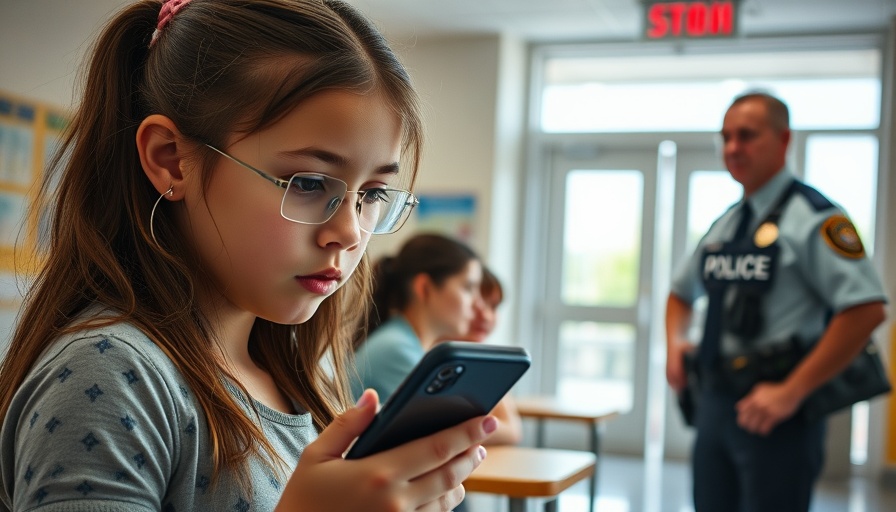
Maricopa Schools Take a Stand on Cell Phone Use
In a significant move reflecting growing concerns over technology's impact on education, the Maricopa Unified School District (MUSD) has aligned itself with Arizona's recent regulations on cell phone usage in schools. Under the leadership of Governor Katie Hobbs, who enacted House Bill 2484, schools are now mandated to enforce strict restrictions on when students can access their phones and social media platforms during school hours.
Understanding the New Regulations
The legislation mandates that students only use their phones when specifically permitted by teachers or in emergencies. Tracey Pastor, the assistant superintendent, emphasized that existing policies needed an update to align more closely with state laws. The new regulations not only reinforce existing restrictions but also clarify the usage protocols, particularly for students on individualized education programs (IEPs) or those needing medical accommodations.
The Incident That Sparked Change
The urgency of this policy adjustment became painfully clear following an incident at Desert Sunrise High School last February. A student assaulted a substitute teacher after they confiscated his cell phone. This incident, which resulted in severe consequences for the teacher and student, underscored the need for immediate policy reform in how schools handle cell phone usage. The release of body-worn camera footage by local police has brought to light the serious ramifications of such altercations in the educational environment.
Community Reactions and Broader Implications
Community members and educational leaders have largely supported the policy change, seeing a direct correlation between reduced phone distractions and improved focus on instruction. School board Vice President Patti Coutré stated, "Phones are distracting, even for adults. Giving teachers control with clear guidelines is incredibly important." The focus on creating a more conducive learning environment aims to enhance student engagement and minimize disruptions caused by personal devices.
Real-World Consequences for Violations
The updated policies, which will be included in student handbooks and communicated through newsletters, come with a clear set of consequences for those who violate the rules. As schools adapt to these changes, stakeholders are hopeful that the incidents of violence and disruption will decrease, paving the way for a safer educational atmosphere.
Looking Ahead: What This Means for Students and Teachers
The changes implemented by MUSD not only reflect a local response to technology’s growing influence in classrooms but also indicate a broader trend in educational policy across the state. As schools across the Phoenix Valley and beyond continue evaluating their approaches to technology in the classroom, the expectation is that these regulations will foster a more focused and productive learning environment.
As Maricopa progresses with these new policies, the anticipation for improved interactions between students and educators lies at the forefront of this initiative. Will these changes indeed lead to more meaningful educational experiences, or will challenges persist?
As discussions around technology use in education evolve, local communities must engage with these topics, advocating for policies that prioritize student safety and learning potential.
 Add Row
Add Row  Add
Add 




Write A Comment